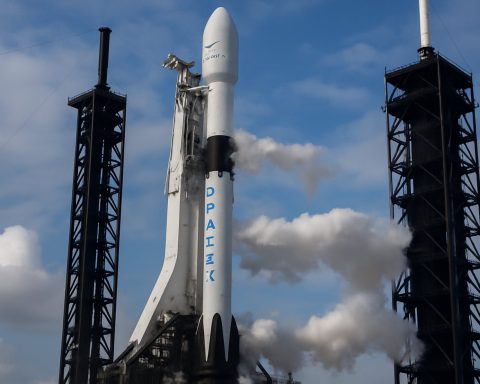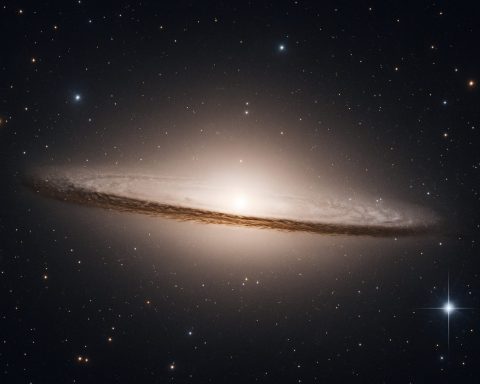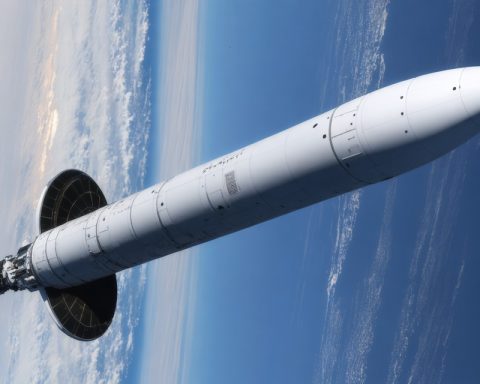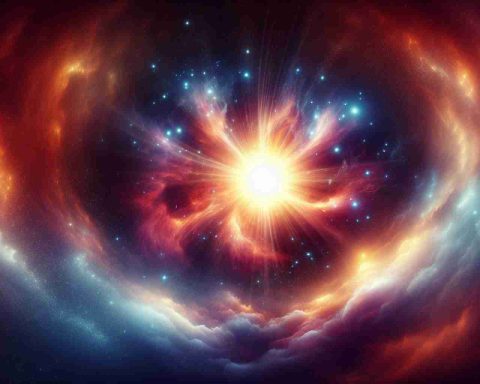- Massive O- and B-type stars may have influenced Earth’s history by causing mass extinctions through supernova events.
- Supernovae can strip away protective planetary shields like the ozone layer, exposing life to harmful cosmic rays.
- Research indicates supernovae align with the timing of the Late Devonian and Ordovician extinction events.
- Histories of extinction events suggest cosmic origins, altering Earth’s biological narrative.
- Modern supernovae occur one or two times per century in our galaxy, posing a low immediate threat to Earth.
- The study highlights the interconnectedness between Earth’s life and cosmic events, reminding us of our cosmic vulnerability.
Stars blaze like cosmic fireworks in the grand theater of the universe, casting their incandescent glow across the inky blackness of space. Among them lurk the giants—O- and B-type stars—whose fiery deaths may have sculpted life’s narrative on Earth in ways previously unimaginable. Recent research from astronomers at Keele University and the Universidad de Alicante now suggests that these stellar behemoths have waged quiet havoc on our planet, potentially orchestrating the mass extinction events that punctuate Earth’s tumultuous history.
The tale begins with supernovae, the cataclysmic demise of massive stars, seeding the cosmos with heavy elements and perhaps rewriting the biological history of planets in their destructive wake. Their silent but powerful explosions possess the ability to strip away protective planetary shields, such as Earth’s ozone layer, exposing life’s fragile tapestry to lethal cosmic rays.
With meticulous precision, researchers conducted a census of these massive OB stars within a kiloparsec of our solar system. The results were compelling: supernova explosions have occurred within perilous proximity to Earth at a rate supporting the timelines of both the Late Devonian and Ordovician extinction events. Each event left deep scars on the tree of life, extinguishing species en masse and orchestrating evolutionary symphonies of change.
Imagine the seas of the Ordovician period, teeming with vibrant marine life, suddenly decimated by an unforeseen celestial assault. Or the Late Devonian, where 70% of species vanished, ushering in a new era of aquatic dominance. These cataclysms align with the suspected havoc a rogue supernova might unleash upon Earth’s biosphere, hinting at cosmic origins for these terrestrial tragedies.
The study presents a chilling possibility: that Earth’s history has been, at times, surreptitiously influenced by the distant clamor of dying stars. Dr. Alexis Quintana and Dr. Nick Wright, at the helm of this stellar investigation, assert the terrifying potential lurking in these cosmic fireworks. Yet, with modern supernova rates estimated at one or two per century in our galaxy, and lethal explosions from nearby stars deemed unlikely, Earth’s immediate future remains secure from these ancient threats.
As humanity progresses toward a deeper understanding of the universe, this revelation serves as a reminder of our cosmic vulnerability. The tale of life on Earth is inextricably linked to the stars, intertwined with destinies written in the supernova debris scattered across the universe. Understanding these connections offers not only insights into our past but also the foresight needed to protect and cherish the fragile equilibrium of life on Earth.
Unveiling Cosmic Cataclysms: How Supernovae Have Shaped Earth’s History
The Enigmatic Influence of Supernovae on Earth’s Extinction Events
Stars, in their cosmic ballet, hold the power to both give and take life. The research from Keele University and the Universidad de Alicante suggests that the colossal O- and B-type stars, through their supernova deaths, may have played a pivotal role in mass extinction events such as those during the Late Devonian and Ordovician periods. This exploration delves deeper into the multifaceted impact of these cosmic phenomena, unveiling new insights and implications for our understanding of life’s history on Earth.
How Supernovae Impact Earth’s Biosphere
1. Atmospheric Disruption: Supernovae can release gamma rays and cosmic rays that interact with Earth’s atmosphere, potentially dissipating the protective ozone layer. This exposure can increase harmful ultraviolet radiation reaching the surface, posing a significant threat to biological life (Melott et al., 2017).
2. Radiation Exposure: Increased cosmic ray penetration can cause mutations in living organisms, accelerating evolutionary processes. These mutations might lead to either adaptive traits or extinction depending on environmental conditions.
3. Climate Change: The energy input from nearby supernovae can influence Earth’s climate patterns, potentially triggering shifts that impact biodiversity and ecosystem stability (Thomas et al., 2015).
Supernovae: A Cosmic Timeline of Extinctions
The rate of supernova activity within a kiloparsec of Earth provides a chilling correlation with historical extinction events. During the Late Devonian event, approximately 70% of species vanished, coincident with evidence suggesting supernova influence.
Real-World Implications & Future Research
– Understanding Ancient Ecosystems: By analyzing isotopic signatures in ancient rock formations, scientists aim to pinpoint the impact of supernovae on Earth’s historical climate (Fields et al., 2020).
– Improving Space Weather Forecasting: With enhanced understanding of cosmic events, we can better predict and mitigate potential impacts of future supernovae on modern technology and ecosystems.
– Astrobiology Insights: Exploring how supernova-driven extinction events might have affected potential life on other planets can guide current searches for extraterrestrial life.
Should We Worry About Future Supernovae?
Current estimates suggest that while supernovae occur frequently in our galaxy, the probability of one affecting Earth in the near future remains low. Technological advancements continue to improve our monitoring capabilities, ensuring early detection and preparation for potential cosmic threats.
Actionable Recommendations
– Invest in Space Research: Supporting observatories and space missions to track star life cycles can provide early warning systems for supernova events.
– Enhance Atmospheric Modeling: Further developing models to understand atmospheric responses to cosmic radiation can improve climate resilience strategies.
– Public Awareness: Educating the public on space weather phenomena can promote greater interest and support for research, fostering a scientifically informed society.
Conclusion
While humanity’s immediate future is secure from the devastation of nearby supernovae, understanding the intricate dance between these cosmic giants and Earth’s history is crucial. By studying the tales written in supernova debris, we not only gain insights into our planet’s past but also arm ourselves with the foresight needed to protect life’s delicate equilibrium. For further exploration of cosmic phenomena, visit Keele University.












